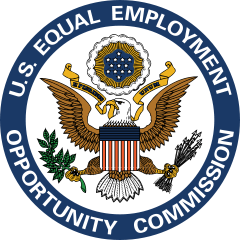 By Brad Cave
By Brad Cave
Certain workplace behavior may be unusual, uncomfortable or downright weird, but may not be unlawful. Do you want to take the chance of knowing what crosses that line?
Imagine receiving this complaint from an employee: “My supervisor frequently compliments my appearance, clothing and cologne. He touched my back and buttocks, claiming he was showing me where he was experiencing back pain. He instructed me to participate in two body-fat contests requiring me to wear a speedo where he again complimented my appearance and tried to touch my buttocks. He repeatedly asked me to join him for drinks during a company event.”
Do these allegations suggest a hostile work environment? Would your company be liable for sex discrimination?
Real Case Offers Guidance
These facts arose in an actual lawsuit filed by Bryan McElroy, a former district sales manager for American Family Insurance (AFI). McElroy was fired by his supervisor, Tony Grilz, after failing to meet sales goals and engaging in insubordinate behavior. After his termination, McElroy filed a charge with the Equal Employment Opportunity Commission (EEOC) and later filed suit in federal court, alleging, among other things, that he was subjected to a hostile work environment based on the above-recited behavior by Grilz.
Uncomfortable Work Behavior
The federal court acknowledged that “some of Grilz’s conduct could make many people uncomfortable.” But the district judge ruled that the conduct did not rise to the level of being so objectively offensive that it created a hostile or abusive work environment. The district court rejected McElroy’s hostile work environment claim and granted summary judgment to AFI.
On appeal to the Tenth Circuit Court of Appeals (whose decisions apply to employers in Colorado, Wyoming, Utah, Kansas, and New Mexico), McElroy argued that if the conduct could make many people uncomfortable, a jury could find it sufficiently offensive to support his hostile work environment claim. The Tenth Circuit disagreed. It failed to see how behavior that was capable of causing “mere discomfort” would necessarily alter the conditions of employment so as to create a hostile work environment.
The court stated that to succeed on a hostile work environment claim, an employee must establish that the workplace is permeated with discriminatory intimidation, ridicule, and insult, that is sufficiently severe or pervasive to alter the conditions of the victim’s employment and create an abusive working environment. The court reiterated that “even incidents that would objectively give rise to bruised or wounded feelings will not on that account satisfy the severe or pervasive standard” necessary for an actionable claim under Title VII. The court affirmed the grant of summary judgment in favor of AFI and against McElroy on his hostile work environment claim. McElroy v. Am. Family Ins., No. 14-4134 (10th Cir. Oct. 30, 2015).
Handling Questionable Complaints
What would you do if you received a complaint based on conduct such as what McElroy reported? Act on it? Ignore it? Here are some tips for handling complaints that may, or may not, rise to the level of severe or pervasive conduct.
Tip #1: Treat Each Complaint Seriously
It may be tempting to dismiss complaints of workplace harassment that may seem minor or inoffensive to you. Don’t do it. You never know if the complainant is telling you the full story or if other, more serious allegations are waiting to be told. In addition, failing to look into a report of workplace harassment will negate certain defenses if the complainant decides to file a lawsuit.
Tip #2: Conduct an Investigation
All reports of workplace harassment should be investigated. Hopefully, your investigation will show that no additional inappropriate behavior is occurring and that the reported conduct was an isolated, non-severe incident. You may, however, find that the conduct is more widespread. Perhaps other employees reporting to the same supervisor have experienced similar conduct, or the conduct has been escalating to involve more physical contact. You need to dig deeper to get the full picture of what the employee and his/her co-workers may be experiencing.
Tip #3: Take Action To Stop Inappropriate Behavior
Whether the behavior rises to the level of creating a hostile work environment or not, take action to stop it. Talk to the person acting inappropriately and explain that conduct such as touching and making comments about other employees’ looks leads to an uncomfortable work environment and must cease. Follow up with the complainant to make sure that he or she is not experiencing further inappropriate behavior or retaliation. Nip such conduct in the bud so that mere uncomfortable behavior does not escalate to unlawful harassment.
Tip #4: Train Supervisors and Employees Annually
Conduct annual training on sexual harassment and other inappropriate workplace behavior in order to educate your workforce on your harassment policies and complaint-reporting mechanisms. Use training sessions to reinforce your commitment to keeping your company free of discrimination and retaliation. Make sure managers and supervisors are trained on recognizing and responding to complaints of workplace harassment.
Conclusion
Unlawful workplace harassment is tricky to define with any certainty. Conduct that one judge or appellate court finds as causing “mere discomfort” may be deemed sufficiently severe or pervasive so as to create a hostile work environment by another judge or court. Your best practice is to keep inappropriate behavior out of your workplace, follow the tips above and stay out of court in the first place.




